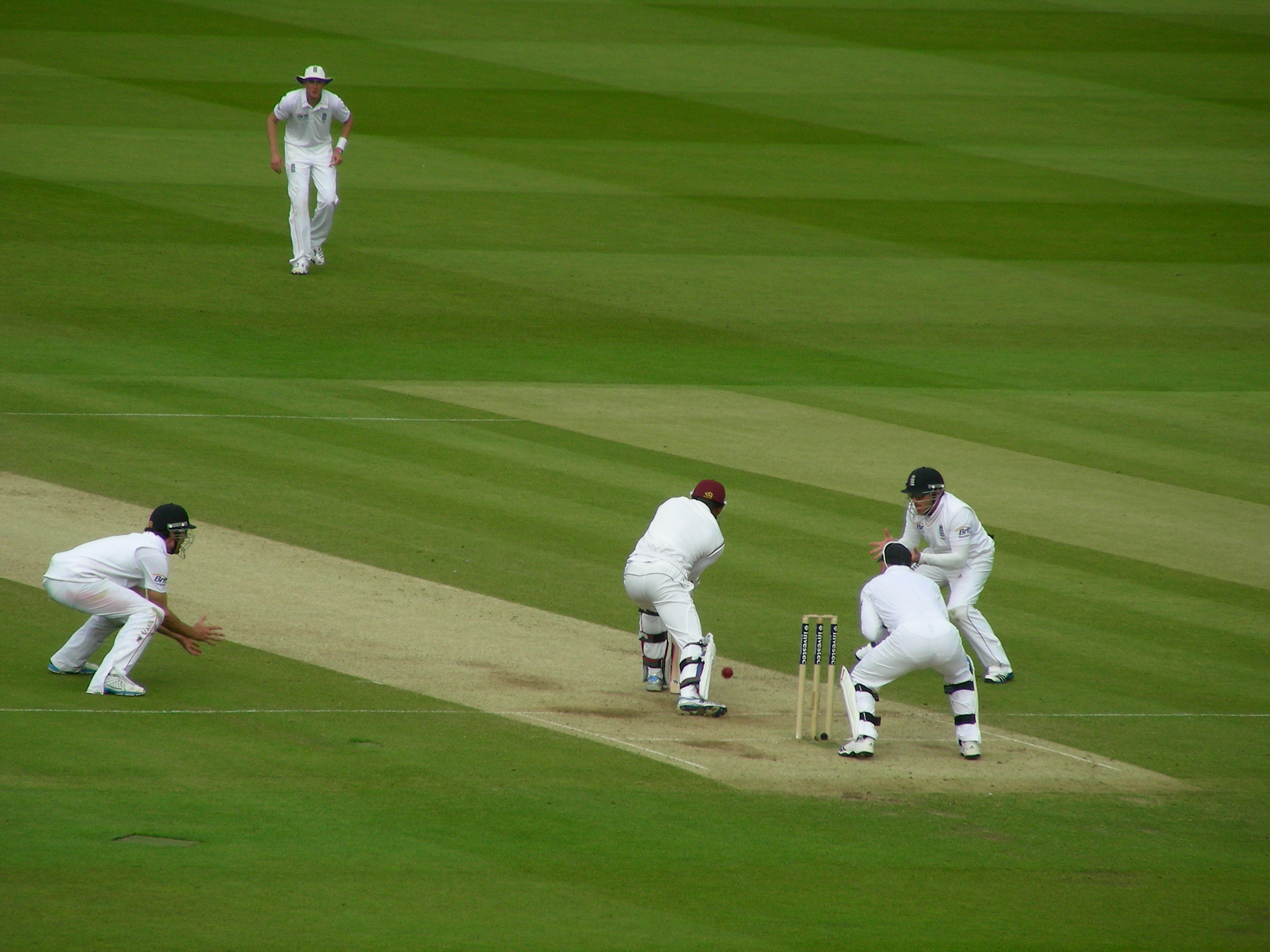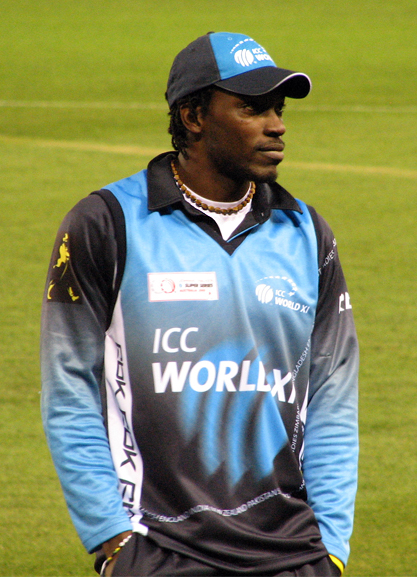Here is the final mini-session analysis for the first test between England and the West Indies at Lords, London, England.
A mini-session is (normally) half a session, either between the start of the session and the drinks break or the drinks break and the end of the session. Occasionally a long session will have 3 mini-sessions where it will be broken up with 2 drinks breaks.
| Mini-Session | Score | Winner |
| 1-1a | West Indies 32/2 off 14.5 | England |
| 1-1b | West Indies 51/0 off 14.1 | West Indies |
| 1-2a | West Indies 31/2 off 14 | England |
| 1-2b | West Indies 32/0 off 15 | West Indies |
| 1-3a | West Indies 41/2 off 14 | England |
| 1-3b | West Indies 56/3 off 17.4 | England |
| 2-1a | West Indies 0/1 off 0.1 | England |
| England 47/1 off 11.5 |
| 2-1b | England 33/0 off 11.1 | England |
| 2-2a | England 38/0 off 13 | England |
| 2-2b | England 49/0 off 15 | England |
| 2-3a | England 39/1 off 17 | West Indies |
| 2-3b | England 53/1 off 12.2 | England |
| 3-1a | England 44/2 off 11.4 | West Indies |
| 3-1b | England 38/2 off 12 | West Indies |
| 3-2a | England 57/3 off 9.3 | England |
| 3-2b | West Indies 36/3 off 14.1 | England |
| 3-3a | West Indies 33/1 off 18.5 | England |
| 3-3b | West Indies 51/0 off 17 | West Indies |
| 4-1a | West Indies 40/0 off 15 | West Indies |
| 4-1b | West Indies 52/0 off 14 | West Indies |
| 4-2a | West Indies 23/1 off 15 | England |
| 4-2b | West Indies 30/1 off 13 | draw |
| 4-3a | West Indies 49/2 off 12 | draw |
| 4-3b | West Indies 31/2 off 11.5 | West Indies |
| England 10/2 off 4 |
| 5-1a | England 60/2 off 13 | draw |
| 5-1b | England 61/0 off 15 | England |
| 5-2a | England 62/1 off 14.1 | England |
End of match England win the count 15-9 and win the match by 5 wickets. Darren Sammy has proven to be good at getting his team into positions where they are competing. He's taken some good sides to the wire. And lost every time. He managed to stop the boundaries, but left plenty of chances for England to hit singles, and they happily ran their way to victory. They ran 79 runs off the last 29.1 overs. That is a lot too many singles to be giving up on the final day when a team is chasing 181.
Sammy did the same thing against India and Australia. There's nothing wrong with giving up runs while trying to get wickets. You just need to provide an incentive for risky behaviour. If you know a player likes to reverse sweep, then leave a gap for him, but get the bowler to bowl a line that makes that shot difficult. Or bowl a line that makes it easy, but fill that gap. Instead Sammy seems to feel that cutting off boundaries creates pressure, and batsmen want to score boundaries, so the batsmen will try something rash and get out. This is a great tactic against impatient batsmen, but Cook and Trott did not fit into that category.
I rate Sammy generally. I feel he makes the right bowling changes. He motivates his team well. The players seem to play for him. But he does not set good fields in test matches. Until he fixes this he will continue to be a captain that gets his players to play well, but not win. That's not a reputation that he wants.
First drinks break day 5: England still lead 13-9. While conventional wisdom would suggest that taking 2 wickets in the first hour would have given the first session to West Indies, England scored 60 runs off 13 overs. The game is in the sort of position that any result is open. I love test cricket.
Stumps day 4: England lead 13-9. What a fight back. West Indies have well and truly got themselves into this game. I'm delighted, because we will get to see some great test cricket tomorrow. Everything went to the script today for West Indies. Samuels and Chanderpaul were magnificent. Ramdin batted sensibly. Sammy scored some quick runs. Gabriel suggested with the bat that the comparisons with Chris Martin were a little premature.
Then Kemar Roach turned the heat up. He's still not bowling as quick as we expect from him according to the speedball radar. But the batsmen don't seem to have enough time, which means he's quick enough. He was described by one commentator as the ghost of West Indies past, but he's a very different bowler to the four horsemen. He tends to use line more than length to dismiss batsmen. He does have one similarity with Andy Roberts in that he changes his pace effectively to keep batsmen guessing. A big part of the art of a fast bowler is getting the batsmen to react to their bowling, hurrying their shots and causing them to follow the ball. Roach does this very well.
We're all set up for a great chase tomorrow. 181 runs, 8 wickets on a dying pitch. Brilliant.
First drinks day 4: England lead the count 12-7. West Indies have made a good start, and have gotten a lead up. If they were to have written a plan for the first hour, knocking off the deficit without losing any wickets would have probably been it.
Stumps day 3: England lead the count 12-6. I though about calling 3-2a a draw, as England were bowled out, but they scored so many runs that despite losing 3 wickets in 9 overs, they were probably in a better place at the end of the hour than they were at the start of it.
The real story of the day came at the end of the middle session, when West Indies lost 3 wickets without adding a run. Their ability to have horrific collapses is very much reminiscent of New Zealand in the mid 1990's. It is a terrible habit to get into, and one that seems to be very difficult to break.
The Samuels-Chanderpaul combination has looked solid, but West Indies need them to really bat well tomorrow. Samuels has shown that playing in the IPL doesn't necessarily ruin someone for test match cricket. To have a realistic chance at winning this game, West Indies probably need another 250 runs. The current format for West Indies totals means that Chanderpaul will have to bat for a long time, and the others will need to score at the other end. Samuels is a much better player than an average of 29 would suggest. Perhaps this is his time to step up.
If the rain keeps away, and West Indies are still batting at tea tomorrow we could have a grandstand finish. However, it's probably more likely to be a procession where England knock off the final wickets for about 70 then score the runs for the loss of 0 or 1 wicket. As much as it hurts me to say that.
Lunch day 3: England lead the count 9-5. Sammy showed in that last hour exactly why a lot of people don't rate him. And also why a lot of people do rate him. He moved the ball enough to take the edge, made the batsmen think about what they were doing, and stop them playing instinctively. It will be interesting to see what he does after lunch. I would imagine that he will go for Roach and Edwards, but Gabriel is bowling with some menace, and it might be a good idea to give him a couple of overs after the break.
Bell has batted through the morning, accumulating runs effectively, and without really getting noticed.
First drinks, day 3: England lead the count 9-4. Kemar Roach has taken two good wickets, and has continued to stand high above the rest of the West Indian bowlers. This partnership between Prior and Bell is a vital one. The English bowlers are very good at batting against the old ball, but I'm not so sure they will be as good against a new ball.
Stumps day 2: England lead the count 9-3. West Indies hardly had anything to smile about today. They lost their last wicket on the first ball. They then took only 3 wickets on an overcast day with a reasonably fresh pitch.
Sammy was unlucky to not have Trott lbw just after lunch, and England made them pay. Sammy finally got his man, but it took 40 more overs. The battle between Trott and Sammy was one of the highlights. Trott was moving well forward, often trying to attack, and Sammy was trying to keep the ball in the awkward areas. Sammy won this round, with Trott only scoring 24 off the 52 balls he faced of Sammy's.
The other highlight for the West Indians was the bowling of Shannon Gabriel. While he didn't take any wickets he got it through well (only bowler this match to get over 145km/h), and looks like the sort of bowler who could be very effective against the tail. (Although looking back through his recent matches, only 4 of his last 21 wickets were numbers 9, 10 or 11, so he has actually tended to be more effective against decent batsmen)
But the overwhelming story of the day was Andrew Strauss getting his century. He's been under some pressure recently as there is only so long a team can keep a captain who isn't contributing with the bat (or ball). This was a magnificent hundred. One half chance, when he was dropped off a no ball, but other than that it was immaculate. He cut and drove the ball to the fence, some of the shots with exquisite timing. He got tied down for a while in the middle of the day, at one point scoring only 2 runs off 31 deliveries, but his patience was rewarded and he put up a score that has put his team into a commanding position.
Lunch day 2: England lead the count 6-2. England move further ahead in the match. Sammy came on, but Trott had answers to all his questions. If the rain keeps away it could be a very interesting 2nd session, as there will still be plenty in the air for the West Indian bowlers, but England will want to keep up their positive intent. A couple of wickets just after lunch could make this a very interesting match.
First drinks break day 2: England move ahead 5-2. It was going convincingly to England before that final wicket. Still England's hour. Now when will we see Sammy bowl?
Stumps day 1: England lead the count 4-2. They are ahead in the match, and are about where they would have wanted to be at the start of the day after winning the toss. West Indies won't be too upset though, as they have some decent runs on the board and there seems to be plenty of life, both in the pitch and in the air.
Anderson slowed down his pace in order to get more movement, and looked quite dangerous. Which suggests that Darren Sammy could be quite a handful on this pitch. It should be an interesting second day.







